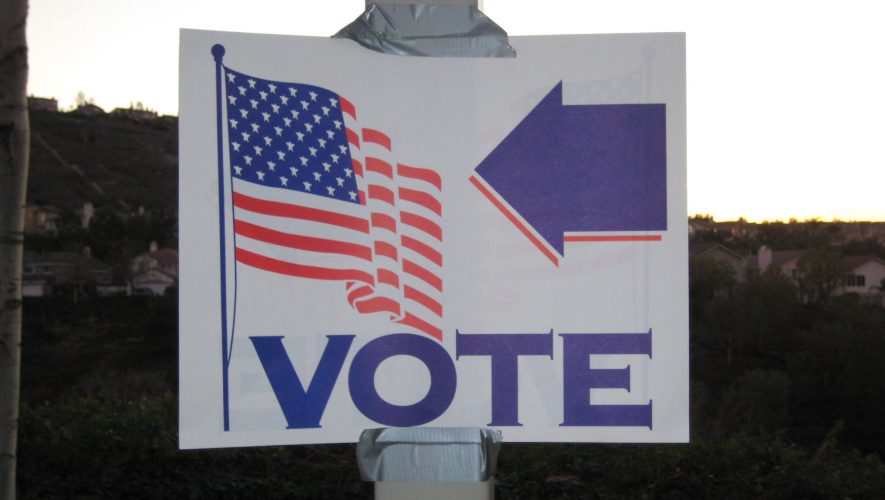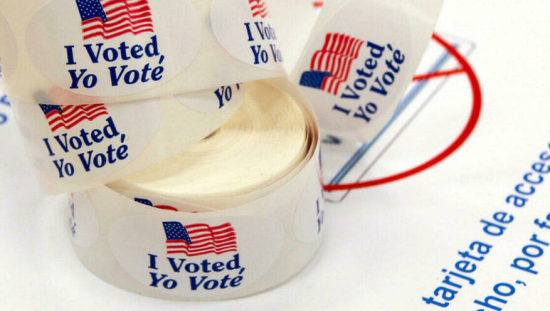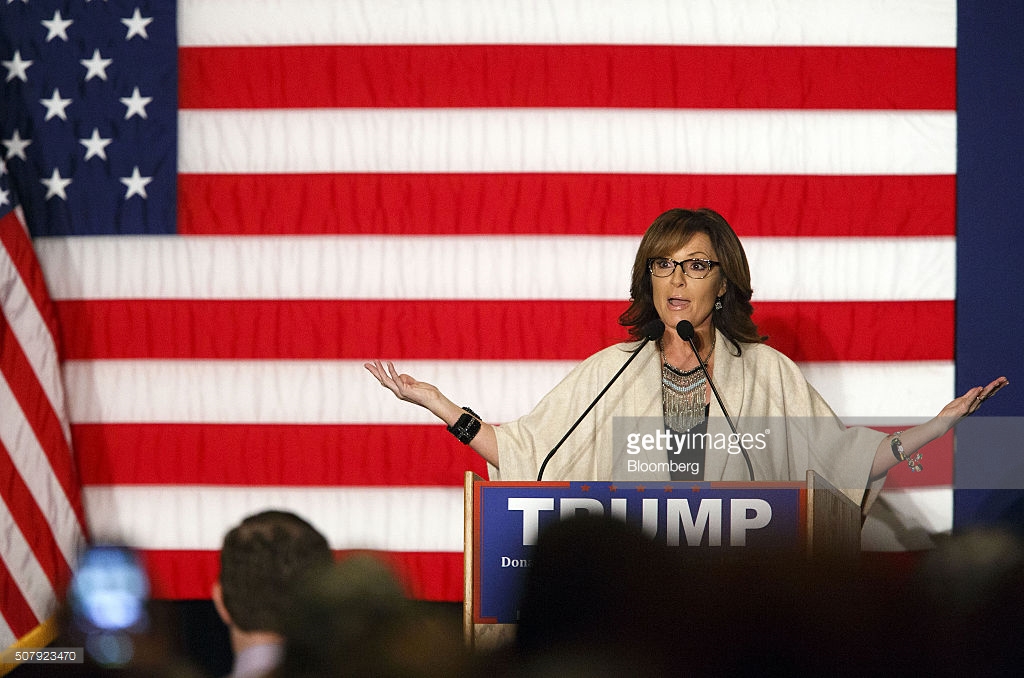There is a generational rift paralyzing both major parties in the United States—a rift that is hindering legislative progress across the nation.
Young people are more likely to identify as liberals but less likely to identify as Democrats, according to a Brookings Institute study from November 2016. Of the sampled demographic, 35 percent of youths aged 18–29 identified as independent in 2016, compared to 30 percent in 2012 and 29 percent in 2008. Additionally, an NBC News/GenForward poll published in November 2017 found that 71 percent of millennial voters believe that a third major party is needed.
Much of this divide is due to young voters having different priorities than older party leaders. Michaela Robbins and her mother Wendy Robbins are both registered Democrats, but they disagree on policy and methods for institutional change.
“At the moment the most pressing issues to me are women’s rights, abortion access, immigration laws—social issues in whole like right to health care,” says Michaela Robbins, a fourth-year Political Science major at Cleveland State University and a self-identified socialist.[1]
Although Robbins is a registered Democrat, she notes that she doesn’t feel particularly connected to either major party, saying, “A lot of my views are just a lot more left.”
Laurel Matia, a third-year Public Affairs and Economics major at The Ohio State University and a registered Democrat, shares Robbins’s sentiment.
“I’m really interested in racial equality and gender policy and policies that affect that,” Matia explains.[2] She even worked for the Democratic Party in Ohio.
“I’m a little more socialist than my parents who also identify as Democrats,” she explains, noting that she would like to see a more leftist candidate but fears that someone like Bernie Sanders would never make it past the primary elections.
“Bernie’s cool, I just can’t see him ever winning. I probably identify a lot with his policy but whoever is nominated in the primary I’ll vote for as the Democrat,” notes Matia.
Robbins explains that she will likely vote for the Democratic candidate in the 2020 election as well, but feels that no candidate would adequately reflect her needs.
Even when Gen Z voters identify with a political party, many—especially young registered Democrats—wish that the party would move further left. Robbins explains that she would vote for a third-party candidate if she thought they had a chance of winning the presidency, but suggests that the Electoral College could make that impossible.
“The Democratic party is not ideal to me. I just feel like I have to vote for them because they kind of align with my views but not fully,” she says. “But I would definitely register for another party if they were more radical and had a chance.”
In contrast, Robbins’ mother, Wendy Robbins, 58, is a self-identified Democrat and believes in gradual change.
“I’m more center about some things just because I think that’s how you move things forward. I think you always need to take incremental steps to get to a progressive or liberal agenda,” explains Wendy Robbins, reflecting a stance that older Democratic voters tend to take.[3]
As opposed to her daughter, Wendy Robbins is less concerned with social issues and more with structural gatekeepers, specifically noting the preservation of the Supreme Court.
“The Supreme Court is one of the biggest issues on my mind constantly. Just following the law and having a real knowledge of history,” explains Wendy Robbins, indicating that experience and qualification in a candidate takes priority when navigating the lineup. She would like to elect a seasoned politician as president, noting, “I think everything takes time to achieve an end goal.”
Speaking to Michaela and Wendy Robbins’ difference of approach to political ideology, researchers have found that there is in fact a generational rift within the Democratic Party.
The Washington Post reported that older Democratic leaders such as House Speaker Nancy Pelosi are driven by fear, backing an incremental approach of “push too fast or too far, and there’ll be a backlash.” This approach is internalized by older Democrats after the traumatizing 1980 election landslide. Younger party members, such as Rep. Alexandria Ocasio-Cortez (NY), believe that the hedging, incremental approach of older party leaders can lead to ruin, a sentiment internalized by many Gen Z and millennial voters.
The rift does not exist only within the Democratic Party. According to a 2019 study by the Pew Research Center, Gen Z Republicans stand out on some key issues as opposed to older Republicans, including millennials. They are more likely to say that the government should do more to solve problems than their older counterparts. They are more likely to recognize the reality of human-caused climate change.
Maddie Campbell, a third-year Mechanical Engineering major at Northeastern University originally from Chagrin Falls, Ohio, is not registered to vote but identifies as a conservative-leaning independent. Campbell believes that the government should do more to combat climate change, preserve LGBTQ+ rights, and increase background checks for the purchase of firearms. On the other hand, she opposes Medicare for All and believes that raising taxes would hurt the US economy.
For Campbell, the most important issue is a vibrant job market.
“Hopefully there’s not an economic downturn when I graduate college,” Campbell explains.[4] “I just want [policy] to be practical, you know. I’m not in any debt yet—which is great—but my ideal world would be I’m able to save enough money for my 401k.”
“I know my parents, they like Trump,” Campbell explains. “But I don’t want to just vote for Trump because my parents vote for him.”
But she doesn’t feel invested in the Democratic Party, either, as she feels most policy “doesn’t directly affect [her] at this point in [her] life.”
A 2017 national poll of voters aged 18 to 29 conducted by Harvard found that only 21 percent believe the Republican Party cares about people like them; 34 percent believe the Democratic Party cares about them.
Moreover, according to a January 2019 Pew study, candidate success in 2020 will largely be contingent on younger voter participation, as millennials and Gen Z are projected to make up 37 percent of the 2020 electorate, outnumbering baby boomers by nine percent and Gen X by 12 percent. Gen Z alone is projected to outnumber the Silent Generation by one percent.
These trends of young voter disengagement clearly represented in both parties cannot be overlooked in the discussion of stronghold states. And while voters in Northeastern Ohio are being analyzed, this rift has implications throughout the electorate. If the trend continues, this could be bad news for the 2020 elections as rifts work to create a more polarized political landscape, inside and outside of party lines.
[1] Robbins, Michaela. Interview by Taraneh Azar. Phone, September 24, 2019.
[2] Matia, Laurel. Interview by Taraneh Azar. Phone, September 24, 2019.
[3] Robbins, Wendy. Interview by Taraneh Azar. Phone, September 24, 2019.
[4] Campbell, Maddie. Interview by Taraneh Azar. Boston, MA, September 24, 2019.



